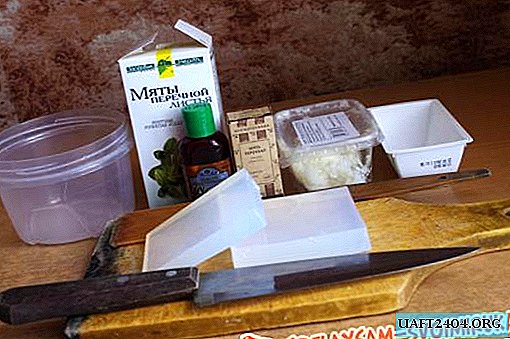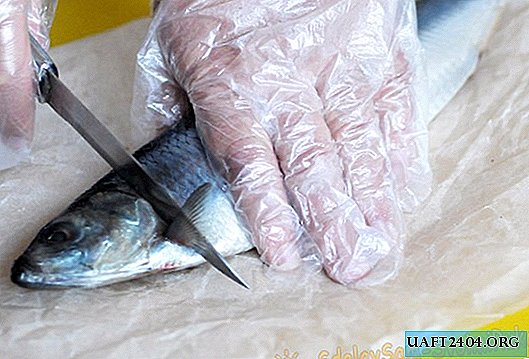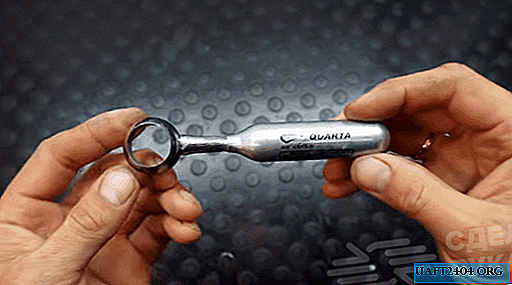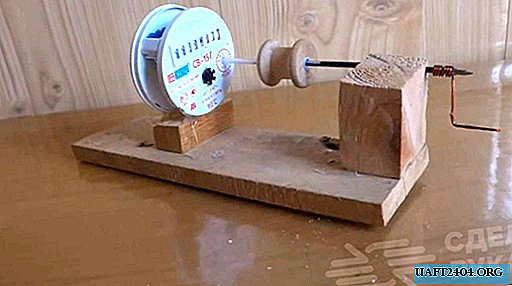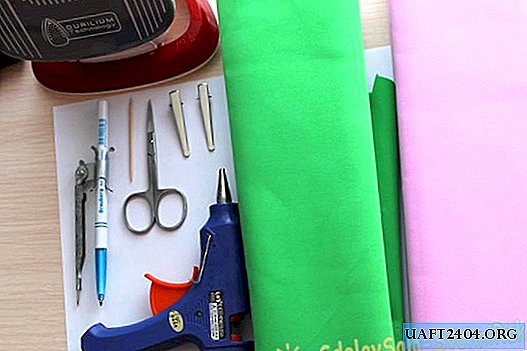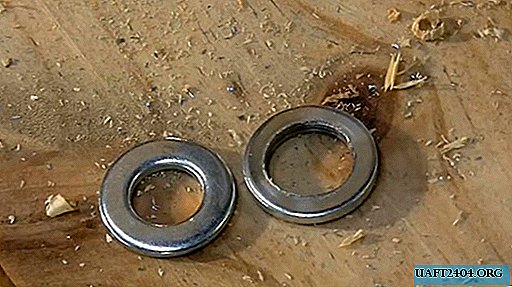Share
Pin
Tweet
Send
Share
Send
What do we need?
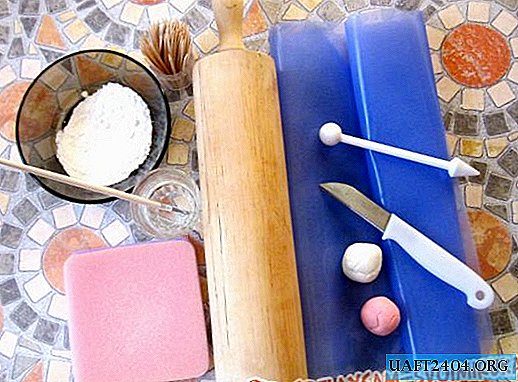
- Smooth work surface.
- A silicone mat is desirable (but you can do without it).
- Confectionery mat.
- It can also be replaced with an ordinary thick sponge for dishes.
- Knife.
- Capacity with water.
- Brush
- Powdered sugar.
Some use potato starch instead of powder or together in a 1: 1 ratio, but I do not like the latest options. After products from such mastic stand for some time, they become tasteless.
- Rolling pin.
- Toothpicks.
- Mastic.
You can buy it (the Italian, Modelplast is used in the master class), or you can make it yourself from a marshmallow souffle. Confectionery tool (with a large ball at the end). It can also be replaced, for example, with a stick from a baby xylophone.
So, let's get started?
1. Lay out the mat, sprinkle it with icing sugar.

2. For rose petals, you can take mastic of the same color, or you can make it somewhat more interesting, make the middle white, and the edges pink. To do this, roll a sausage between the palms of the white mastic.

3. Roll the pink mastic with a rolling pin.
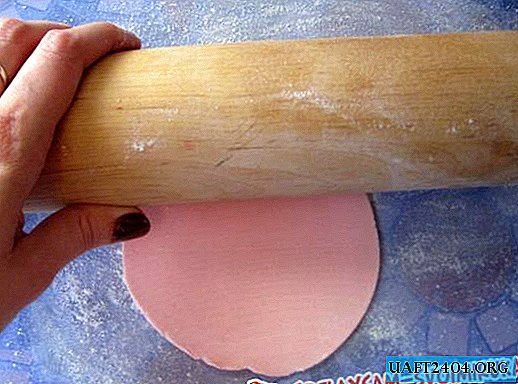
4. Put a white flagellum on a pink pancake.
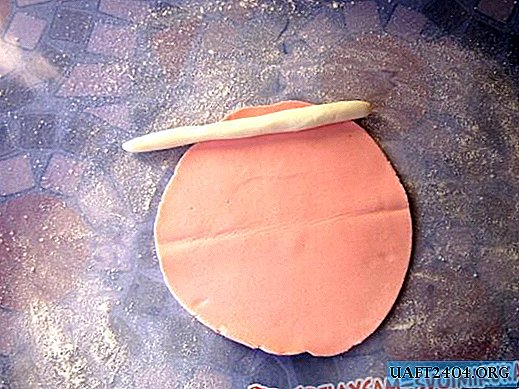
5. Wrap tightly.
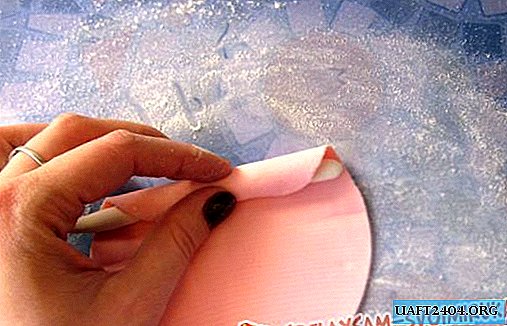
6. This is what you should get.
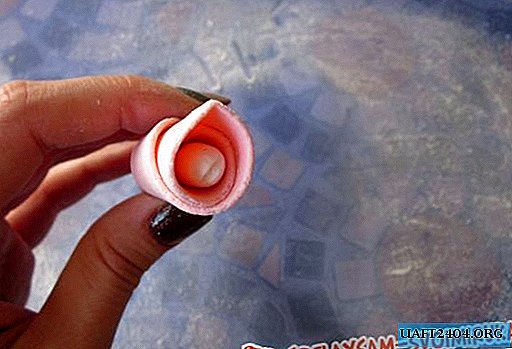
7. Ride the resulting tourniquet on the mat with your fingers with a little effort.

8. Cut a few pieces (12-15 pieces) with a knife about 5 mm wide. If you want to make a small rose, then such a diameter of the tourniquet is enough, but for a large flower, the "sausage" must be made thicker.
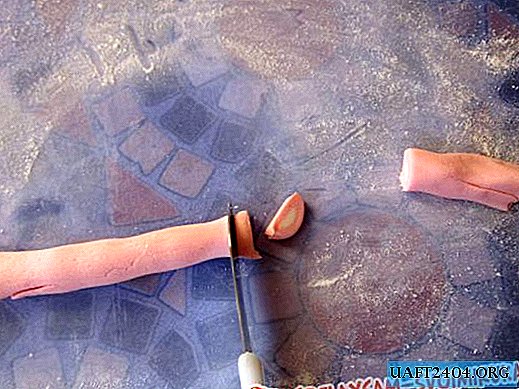
9. With your fingers, knead each piece of mastic, giving it the shape of a petal.
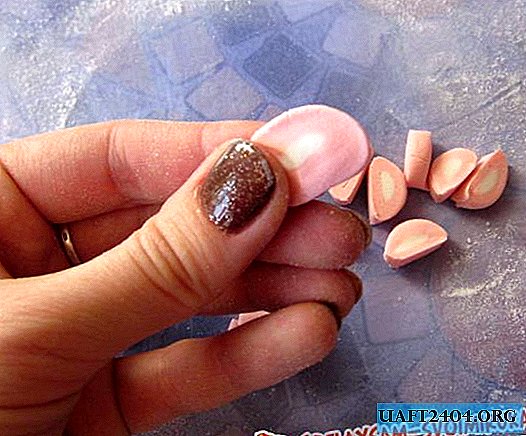
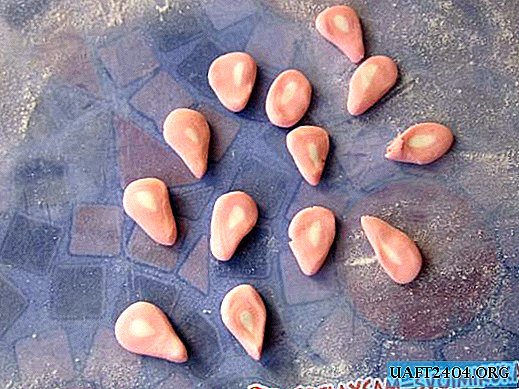
10. And now each petal needs to be made thin and graceful, bringing it as close as possible to its natural look. To do this, put the petal on the mat and roll out its edges with the help of a confectionery ball and a slight pressure.
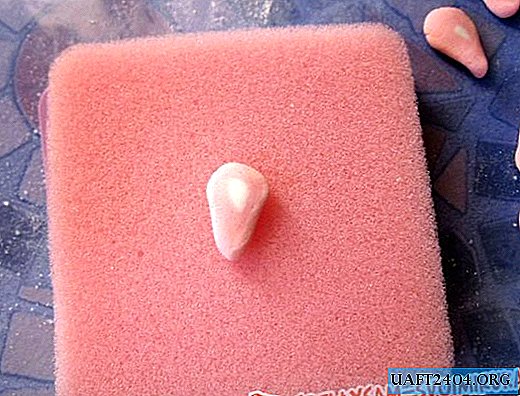
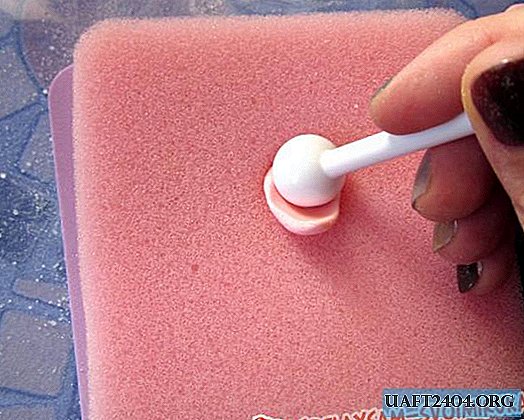
Do not overdo it. If the mastic is made too thin, it will be easily torn and it will become impossible to work with it.
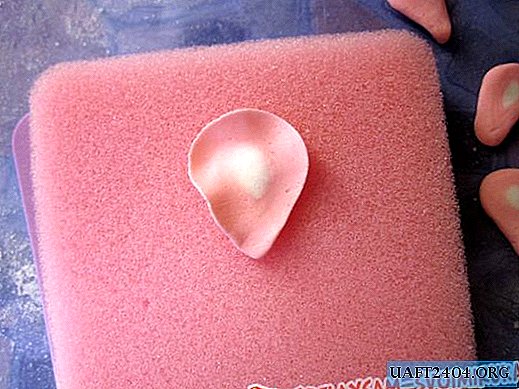
11. Here you have the petals of the future rose.
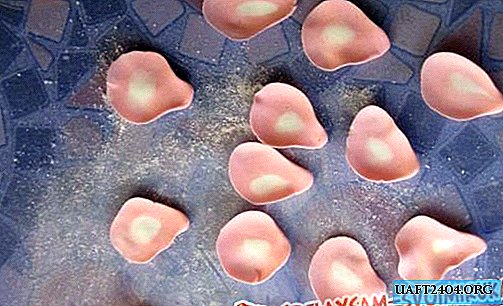
12. The turn of the toothpicks came. You probably puzzled over why - what are they for? But in fact, everything is very simple: it is convenient to twist the edges of the petals with them, giving them naturalness.
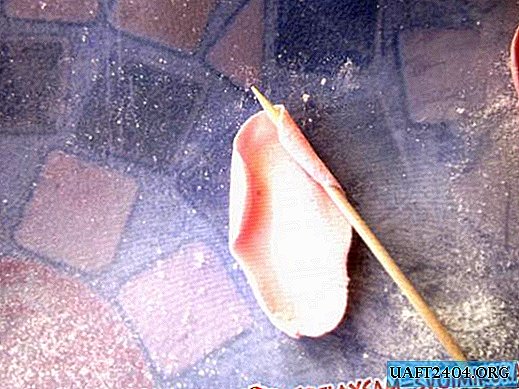
13. Half of the blanks, twist the edges inward - these will be our future petals, which have not yet blossomed. Leave one blank untouched, and twist the rest of the edges outward - these are the future "external" petals.
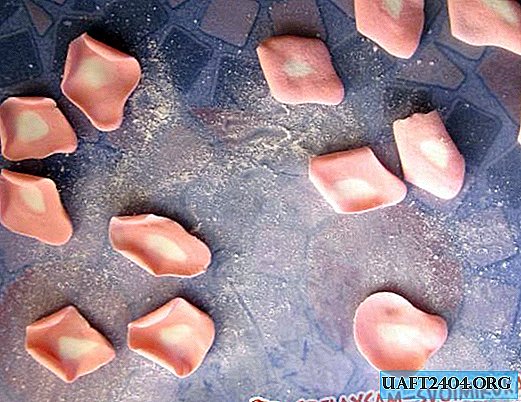
14. Take in your hand the very workpiece that has remained untouched. Moisten a brush with water and brush the edges of the petal at the base with letter V. Water for mastic is real glue!
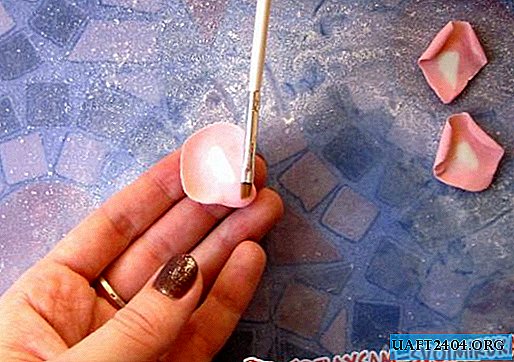
15. Twist the workpiece into a tube. This will be the "heart" of our bud.
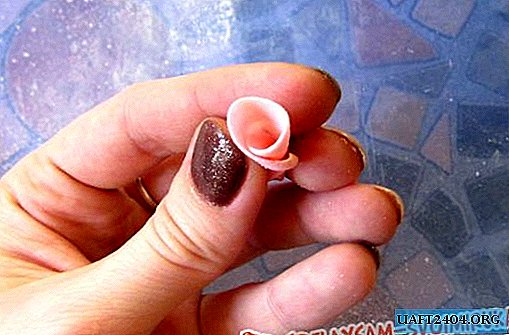
16. If during work you feel that you too wet the mastic and it “swam”, became soft and naughty - just sprinkle powdered sugar on this place and everything will return to normal.
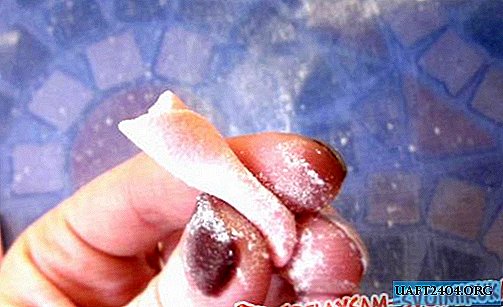
17. In the next step, we will only work with petals whose edges are bent inward. Also wet the edges with the letter V.
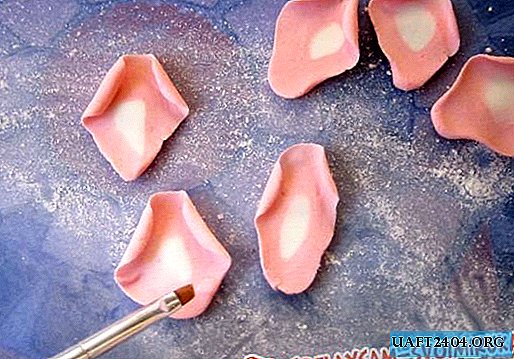
18. Glue our first petal to the core.

19. Glue the second petal, half departing from the first, so that they lie "overlap".
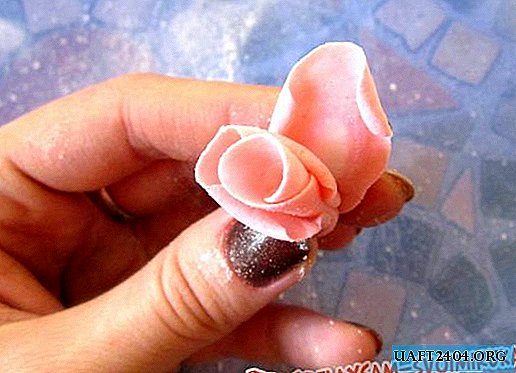
20. In the same way we manage with the rest of the "internal" blanks. About this kind of flower at this stage you should get.
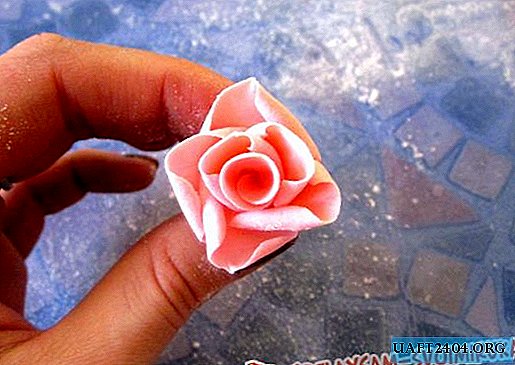
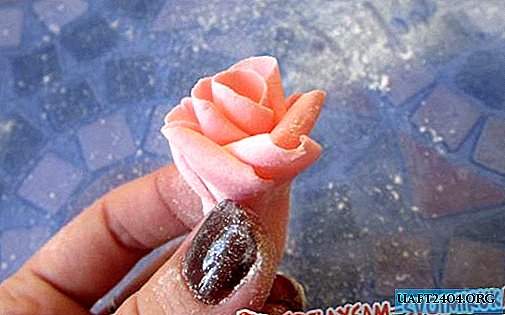
21. The turn of the outer petals came. Also wet each with water.

22. Glue to the bud.
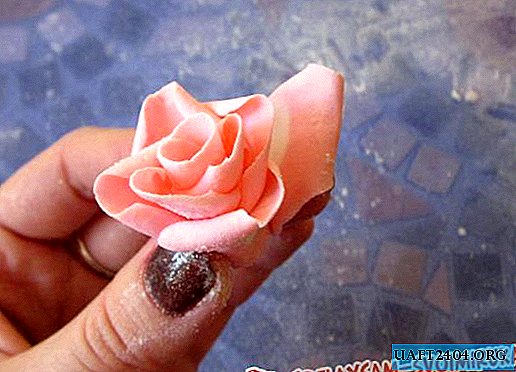
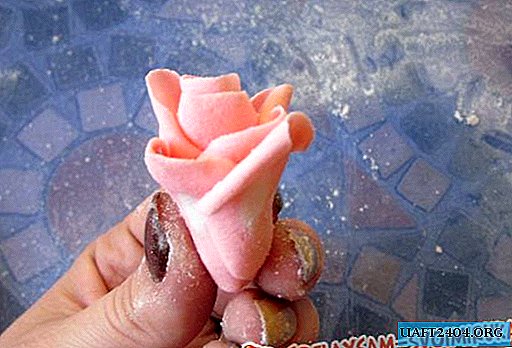
23. After all the blanks are in place, the flower immediately takes on a "lush" look.
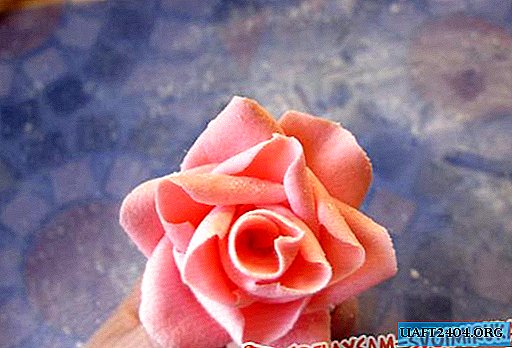
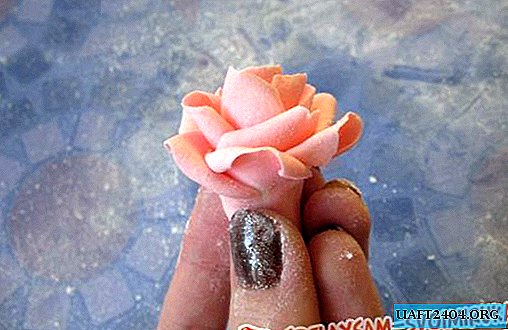
24. After all the manipulations, the excess, too long base of the bud can be pinched off.
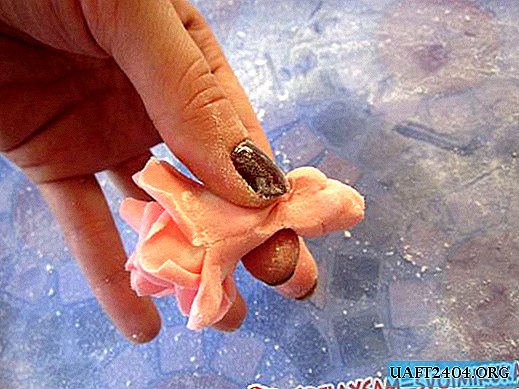
25. In order for the flower to be easily attached to the cake, even to its side, without fear that it will fall or eat, we stick a toothpick vertically into its base.
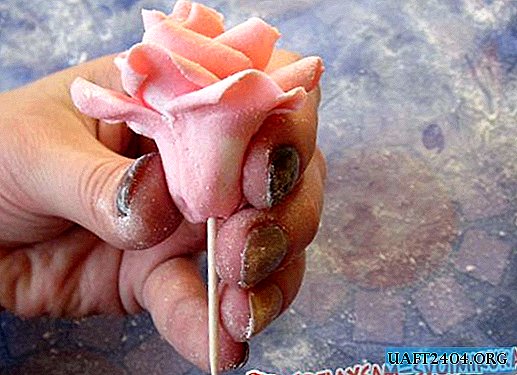
26. With another toothpick, pierce the base horizontally.
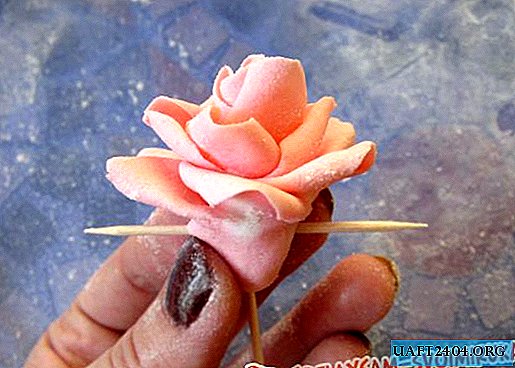
27. Find a glass or any other container in which the bud is placed. Lower the flower so that it rests on the toothpick.
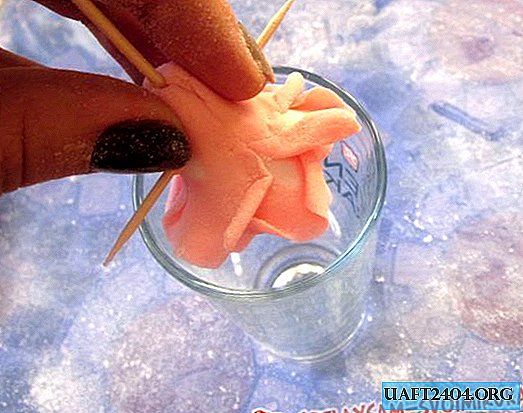
28. This position must be given to the rose while the mastic will dry. So all the petals harden in the right shape for 24 hours. After that, you can safely pull out a horizontal toothpick.

Here is such a wonderful rose, I’m sure it will work out for you too! If something goes wrong the first time, don’t worry and try again! After all, everything comes with experience. And in a very short time you will be able to please friends and family with a chic dessert and proudly say: "Yes, I made this cake myself!".
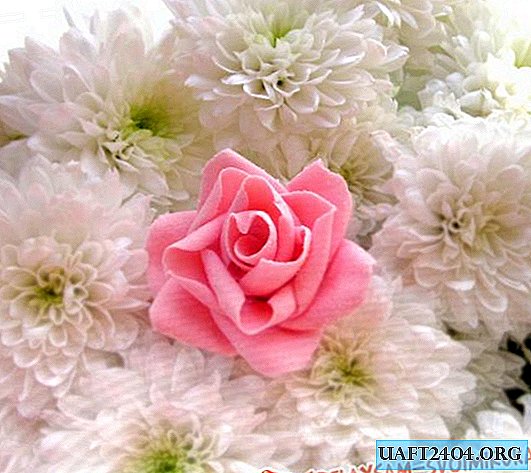
Share
Pin
Tweet
Send
Share
Send

